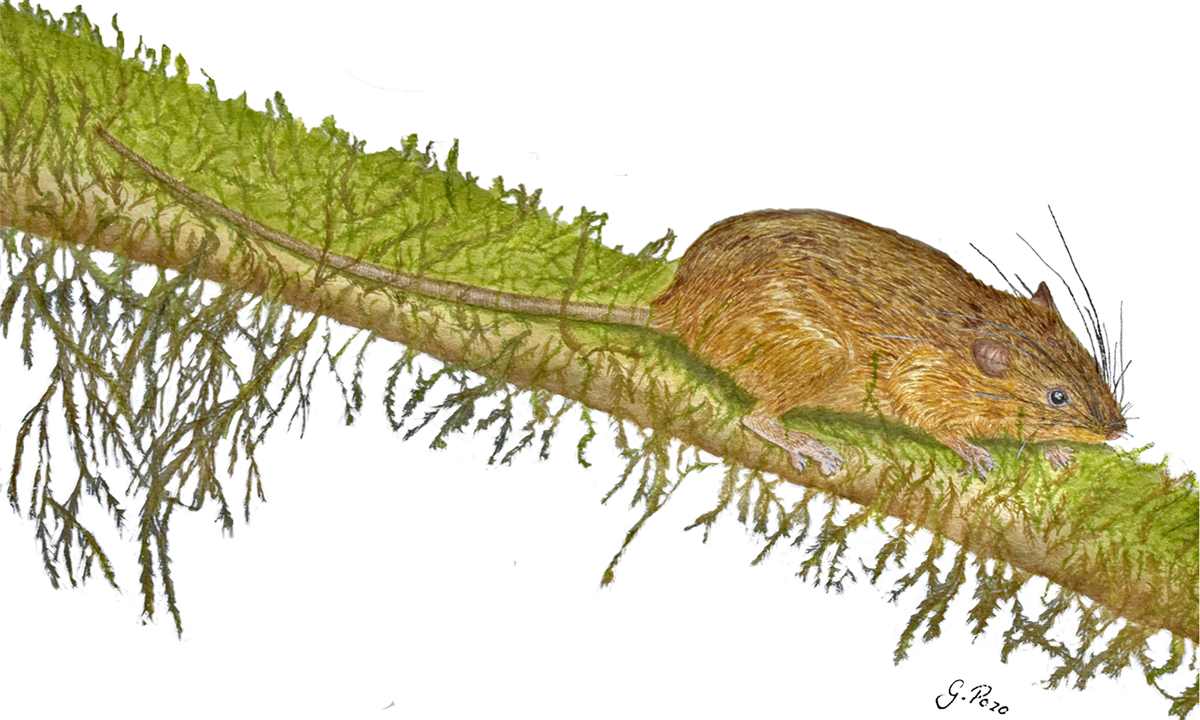New, possibly arboreal rice rat species discovered in Ecuador

Drawing of the new species Mindomys kutuku. © Glenda Pozo
New rat species of the little known and rare genus Mindomys described: Three expeditions led an international research team with participation from the Leibniz Institute for the Analysis of Biodiversity Change (LIB) to the Cordillera de Kutukú, an isolated mountain range in Ecuador, to find just one specimen of the previously unknown species. The find in the Amazonian side of the Andes underlines the valuable biological role of this mountainous region.
“In total, the expeditions to the Kutukú region in southeastern Ecuador involved 1,200 trap nights, but only one specimen of the new species Mindomys kutuku was found,” says Dr. Claudia Koch, curator of herpetology at the LIB, Museum Koenig Bonn, explaining the effort that went into locating the rare animal. From the collected specimen, the dry skin, skeleton and tissue were preserved for the collections. Preservation will allow future research to detect environmental changes, learn more about the ecology of the animals and plants – and securely document the new species description, which was published in late February in the prestigious journal Evolutionary Systematics. The rice rat genus Mindomys was previously considered monotypic and included only the type species Mindomys hammondi. This species is known from only a few specimens, all of which were collected in the foothill forests of the Andes in northwestern Ecuador.
Using computed tomography images obtained for the new species at LIB and for the holotype (specimen from which a species was described) of M. hammondi at the Natural History Museum in London, the researchers Jorge Brito of the Instituto Nacional de la Biodiversidad (INABIO), Claudia Koch, Nicolás Tinoco from the Pontificia Universidad Católica del Ecuador (PUCE) and Ulyses Pardiñas from the Instituto de Diversidad y Evolución del Sur (IDEAus-CONICET) were able to compare the skulls of the two species in great detail in a 3D model and distinguish between the two species.
The adult male of M. kutuku measures just under 35 cm from snout to tip of tail, of which the tail makes up about 20 cm. It has a dark reddish-brown dorsal coloration and a pale yellow ventral fur.
Since the only specimen found was captured with the help of a ground trap set, it could not be observed in its habitat. Thus, as with its sister species M. hammondi, which was described in 1913, virtually nothing is known about the natural history of the new species. The scientists suspect that both of them could be arboreal species. A tail that is significantly longer than the body length and also covered with long hairs could be two features that indicate an arboreal lifestyle. However, aboreality is the least studied way of life within the New World mice and a reliable study of the anatomical aspects typical of this way of life is still lacking.
Previously, Mindomys records were restricted to the western Andean foothills of Ecuador. The Kutukú material now shows that the genus also occurs on the Amazonian side of the Andes and underscores the valuable biological importance of the isolated mountain ranges in eastern Ecuador.
Contact
Dr. Claudia Koch
Curator of Herpetology
Head of Animal Husbandry at LIB, Museum Koenig Bonn
Radiation Protection Officer
Tel. +49 228 9122-234
c.koch@leibniz-lib.de


